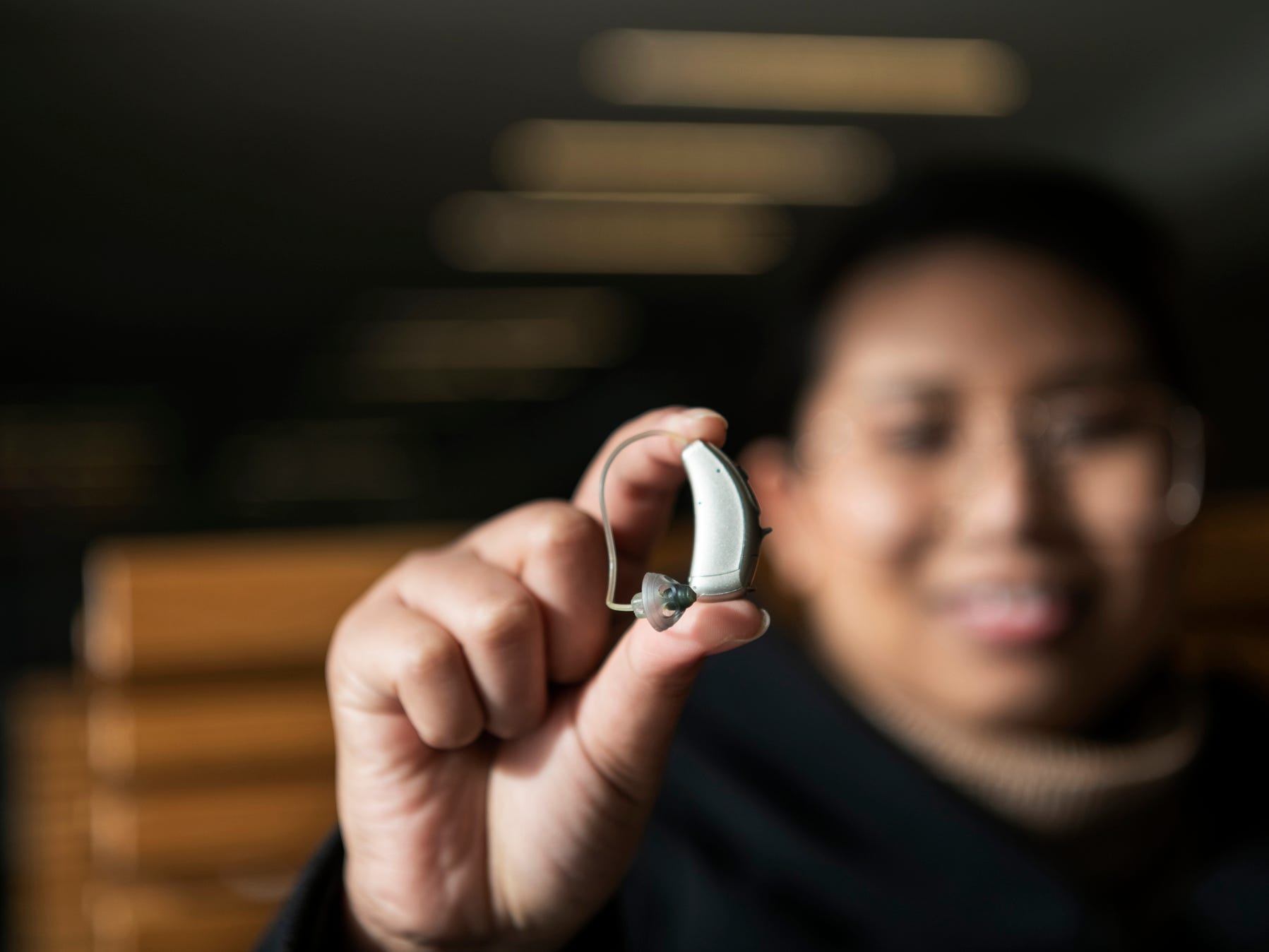
Johner Images/Getty Images
- Personal sound amplification devices, or PSAPs, amplify sound waves for those who have normal hearing, or hearing thresholds of 20 dB or better in both ears.
- Unlike hearing aids, hearing amplifiers are not personalized for each user or clinically prescribed, but offer a number of customization settings and potential mobile app integration.
- PSAPs are good for quieter environments where you want to increase your hearing range or extent, and less great in crowded, noisy areas.
- Visit Insider's Tech Reference library for more stories.
From wireless earbuds to noise-canceling headphones, there are plenty of devices to enhance the experience of listening to audio wherever you are and whatever you're doing. That includes personal sound amplification products, or PSAPs.
They can resemble hearing aids in their look, but hearing aids are commonly prescribed and used for those with significant degrees of hearing loss. PSAPs are lower cost and more accessible to buy because they're designed to enhance sounds for users without hearing loss.
If you're curious about how PSAPs work or are thinking about getting one, here's what you should know before you buy.
Who should use hearing amplifiers, or PSAPs
Hearing amplifiers, or PSAPs, are designed for people who want to amplify sound for recreational use and have what is classified as "normal hearing" – or hearing thresholds of 20 dB or better in both ears. That makes hearing amplifiers ideal for people attending a lecture who may be stuck in the back, or a birdwatcher alone in a densely wooded park.
If you're experiencing hearing loss and it's significantly impacting your day-to-day life, you should avoid PSAPs and opt for getting in to see a doctor about hearing aids.
How PSAPs work

miodrag ignjatovic/Getty Images
The main components of PSAPs are the microphone, speaker, amplifier, volume controller, and power source.
The microphone captures pressure or sound waves and converts them into an electric signal, while the amplifier's electric circuit increases the extent and range of the signal. The speaker takes the amplified signal and converts it back into a sound wave.
Volume controls let you adjust the amplification applied to the electric signal or sound, and the PSAPs battery power keeps the device working.
PSAPs are universally sizable and depending on the model may require you to download an app to make setting adjustments.
Typically, users can control the devices' volume levels, low and high mode amplification options, noise reduction, and settings for different listening environments through these apps.
How hearing amplifiers differ from hearing aids
Even though the two may seem similar, hearing amplifiers and hearing aids function in different ways. Since hearing aids are considered a clinical device, audiologists program and customize them for each person and their unique hearing loss pattern.
"The main thing that distinguishes the hearing aid from the hearing amplifier is that hearing aids are fitted by audiologists," said Daniel B. Polley, PhD, a professor at Harvard Medical School. "They are programmed to simulate the biology of the inner ear a little bit more than a straight-up amplifier."
Polley said that the signal processing of hearing aids is actually designed to mimic some of the features that are lost in an ear with sensorineural hearing loss. More specifically, the missing sensory cells naturally provided by your ear. An aid's compressive nonlinearity - or its technique for detecting and recognizing high-frequency sounds - then compensates for those cells.

Rawpixel/Getty Images
This feature adjusts the hearing aids' dynamic range of sound, lowering the signals' gain or volume if they're too loud. It's similar to lowering the volume on a speaker when the sound levels are too loud to prevent distortion. Ultimately, a hearing aid can improve the dynamic range or intensify the loudness of a signal, which is encoded and converted by the hearing aid.
In all, hearing aids undergo a lot of engineering to maintain sustainable battery life and power consumption. For someone who is experiencing gradual to extensive hearing loss, hearing aids are the better choice over hearing amps.
What you should know before using a hearing amplifier
Unlike hearing aids, PSAPs are not meant to be worn for extended lengths of time and aren't programmed to adjust to anyone's unique hearing loss patterns. In fact, they don't focus on heightening various ranges of sound, and instead simply amplify sound in all directions.
As such, they aren't as complex as hearing aids, and that design simplicity is reflected in their more affordable cost. Without the need for a hearing evaluation or prescription, PSAPs can be purchased over-the-counter much like drugstore glasses.
With PSAPs, users can control specific elements of their auditory experience through their device's mobile app, which offers different listening modes and filters.
"PSAPs offer more control to the user," Polley said. "With hearing aids, the user trusts that the audiologist is going to set the aid to the needed settings."

Pekic/Getty Images
While that kind of customization is ideal for many, you should also be careful when using it. If you do consider using PSAPs, Polley noted that hearing amps don't have directional microphones, making them susceptible to high levels of background noise.
That means crowded environments like a noisy restaurant won't be ideal for hearing amplifiers but the quiet of your living room while watching TV may be.
"I have used PSAPs when I go hiking. I love to amplify the sound with my feet crunching on the sticks with birdsong all around me," Polley said. "I feel super connected to nature when I'm amplifying all the sounds of the forest around me."